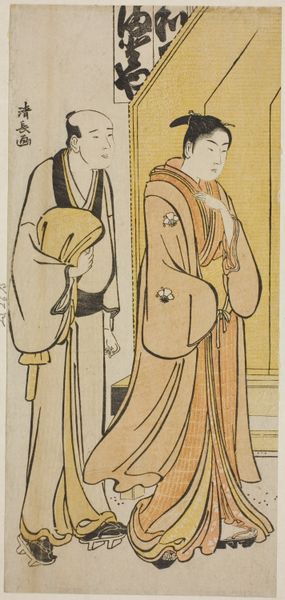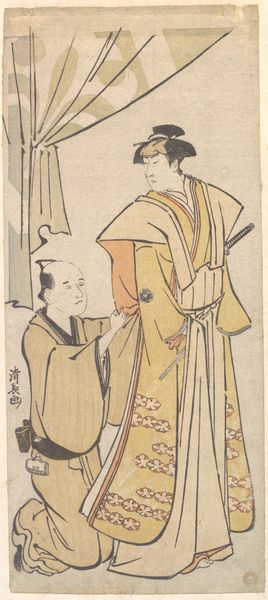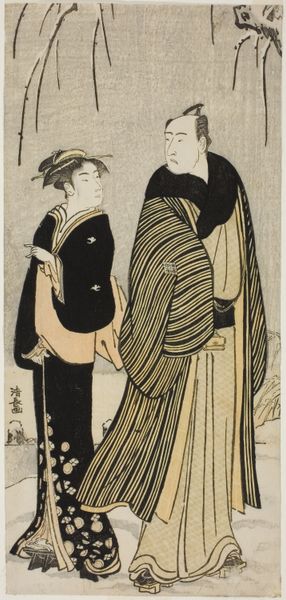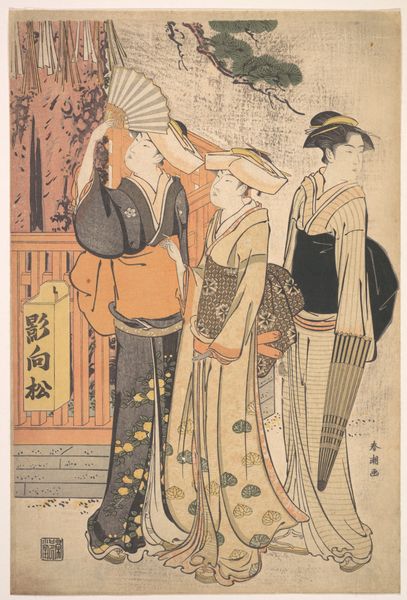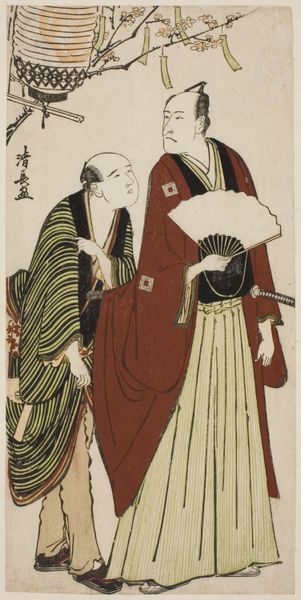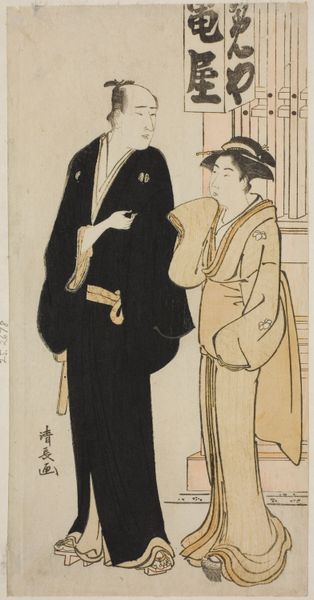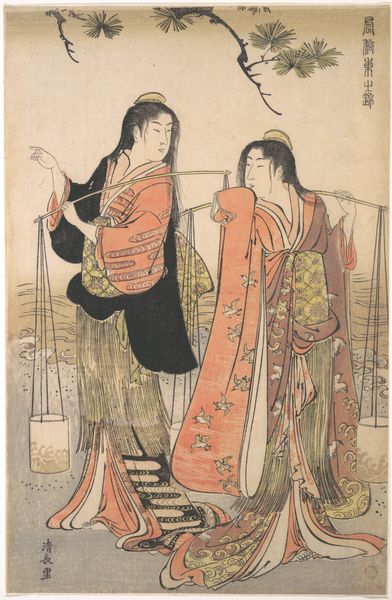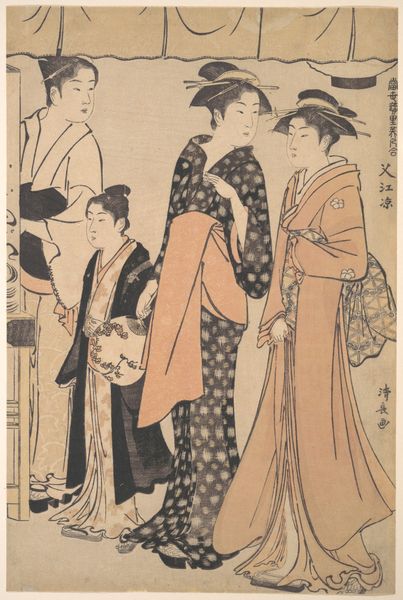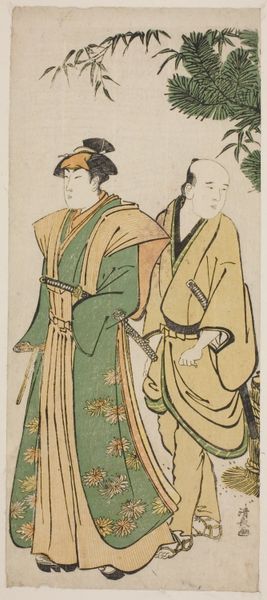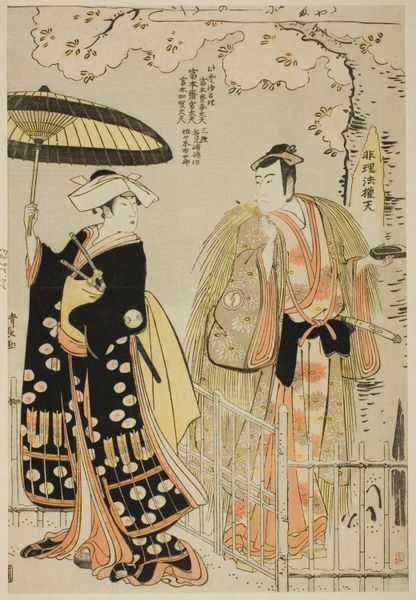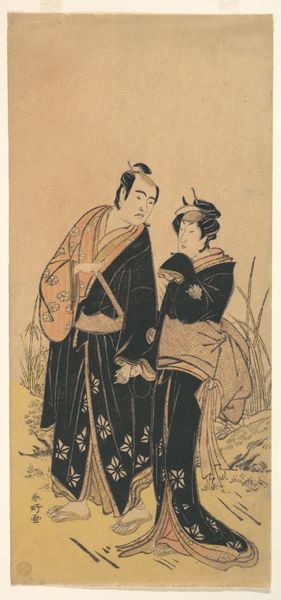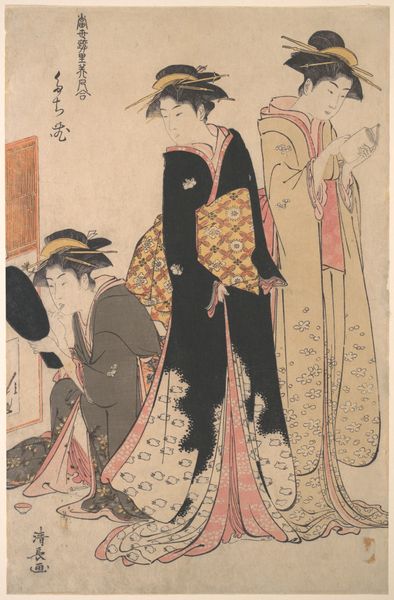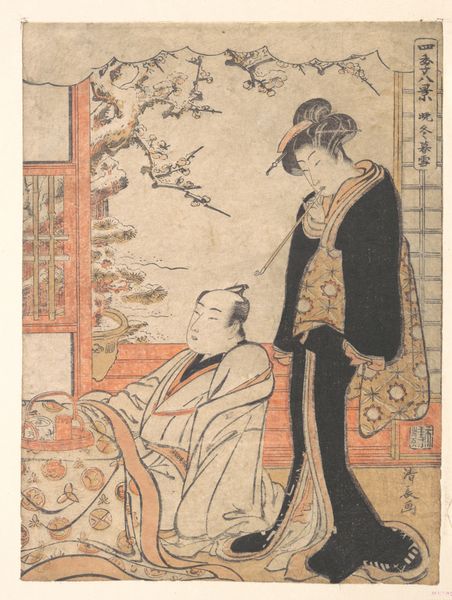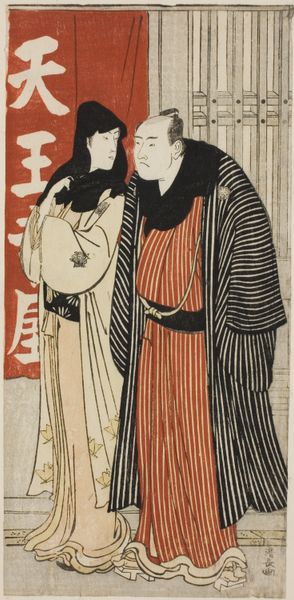
The Actors Nakamura Nakazo I and Azuma Tozo, from an untitled series of prints showing Actors in private life c. 1783
0:00
0:00
#
portrait
# print
#
asian-art
#
ukiyo-e
#
genre-painting
Dimensions: 29.7 × 13.9 cm
Copyright: Public Domain
Editor: We're looking at *The Actors Nakamura Nakazo I and Azuma Tozo*, a woodblock print from around 1783 by Torii Kiyonaga, housed here at the Art Institute. I’m immediately struck by the stillness and the almost architectural quality of the figures; they feel very posed and deliberate. What can you tell me about the context of this image? Curator: Kiyonaga was a master of ukiyo-e, a genre deeply embedded in the socio-political landscape of Edo-period Japan. Consider the 'floating world' that ukiyo-e depicted: it's a world of pleasure, entertainment, and a degree of social commentary often skirting the edges of what was permissible. These weren't simply portraits; they were carefully constructed images meant for public consumption. How do you think the artist’s choice to portray actors in a private setting affected the perception of these figures by the public? Editor: That’s a good point; depicting actors in this 'private' moment could blur the lines between their stage persona and their real life, perhaps humanizing them for the public. But what did it mean to see *these* figures depicted? Curator: Precisely. Ukiyo-e prints circulated widely and, in turn, created fame but also a social identity for performers like Nakamura Nakazo and Azuma Tozo. So the series this print belongs to – showing actors off-stage – actively contributed to their celebrity by both democratizing their image and feeding a kind of carefully-managed ‘behind-the-scenes’ voyeurism. These actors’ identities were also defined through the visual politics enacted and distributed in the print. Consider also the relative lack of expressive detail. Doesn't that suggest a desire to present a controlled, idealized image? Editor: It does. I’m now thinking about this image less as a portrait and more as a calculated piece of PR from centuries ago. It’s incredible how deeply embedded even seemingly simple art can be in larger social and cultural forces. Curator: Exactly. Looking closer at the politics of imagery and the construction of fame allows us to consider a lot more, not just who is shown, but *how* and *why* they are shown. That's the point, really.
Comments
No comments
Be the first to comment and join the conversation on the ultimate creative platform.
